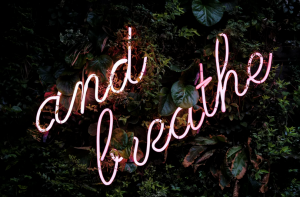Conscious Breathing Provides Several Benefits

I recently read a Washington Post article written by an MD and science reporter in which she described a breathing technique that is research supported that offers several benefits to one’s health. She specifically noted its benefits during our current crisis to slow one’s heart rate and ease anxiety. This 4-7-8 conscious breathing technique is one that I personally use along with meditation practice which also has science supported benefits.
Dr. Andrew Weil is a well-known Harvard educated physician who uses this 4-7-8 conscious breathing in his medical practice and teaching. You can see him demonstrating it below. If you want a step by step written description, scroll past the video for information pulled from Dr. Weil’s website.
“Conscious breathing takes various forms. Dr. Weil believes each variety can be a useful tool for achieving a desired mental or physical state. As the Zen Buddhist monk Thích Nhất Hạnh puts it, “Feelings come and go like clouds in a windy sky. Conscious breathing is my anchor.”
The 4-7-8 Breath (also known as the Relaxing Breath) is the perfect, portable stress antidote, as it puts the practitioner in a relaxed state almost immediately. As Dr. Weil demonstrates, It takes almost no time, requires no equipment and can be done anywhere.
Learn more about the 4-7-8 Breath.
The 4-7-8 Breathing Exercise is utterly simple, takes almost no time, requires no equipment and can be done anywhere. Although you can do the exercise in any position, sit with your back straight while learning the exercise. Place the tip of your tongue against the ridge of tissue just behind your upper front teeth, and keep it there through the entire exercise. You will be exhaling through your mouth around your tongue; try pursing your lips slightly if this seems awkward.
- Exhale completely through your mouth, making a whoosh sound.
- Close your mouth and inhale quietly through your nose to a mental count of four.
- Hold your breath for a count of seven.
- Exhale completely through your mouth, making a whoosh sound to a count of eight. This is one breath.
- Now inhale again and repeat the cycle three more times for a total of four breaths.
Note that you always inhale quietly through your nose and exhale audibly through your mouth. The tip of your tongue stays in position the whole time. Exhalation takes twice as long as inhalation. The absolute time you spend on each phase is not important; the ratio of 4:7:8 is important. If you have trouble holding your breath, speed the exercise up but keep to the ratio of 4:7:8 for the three phases. With practice you can slow it all down and get used to inhaling and exhaling more and more deeply.”






